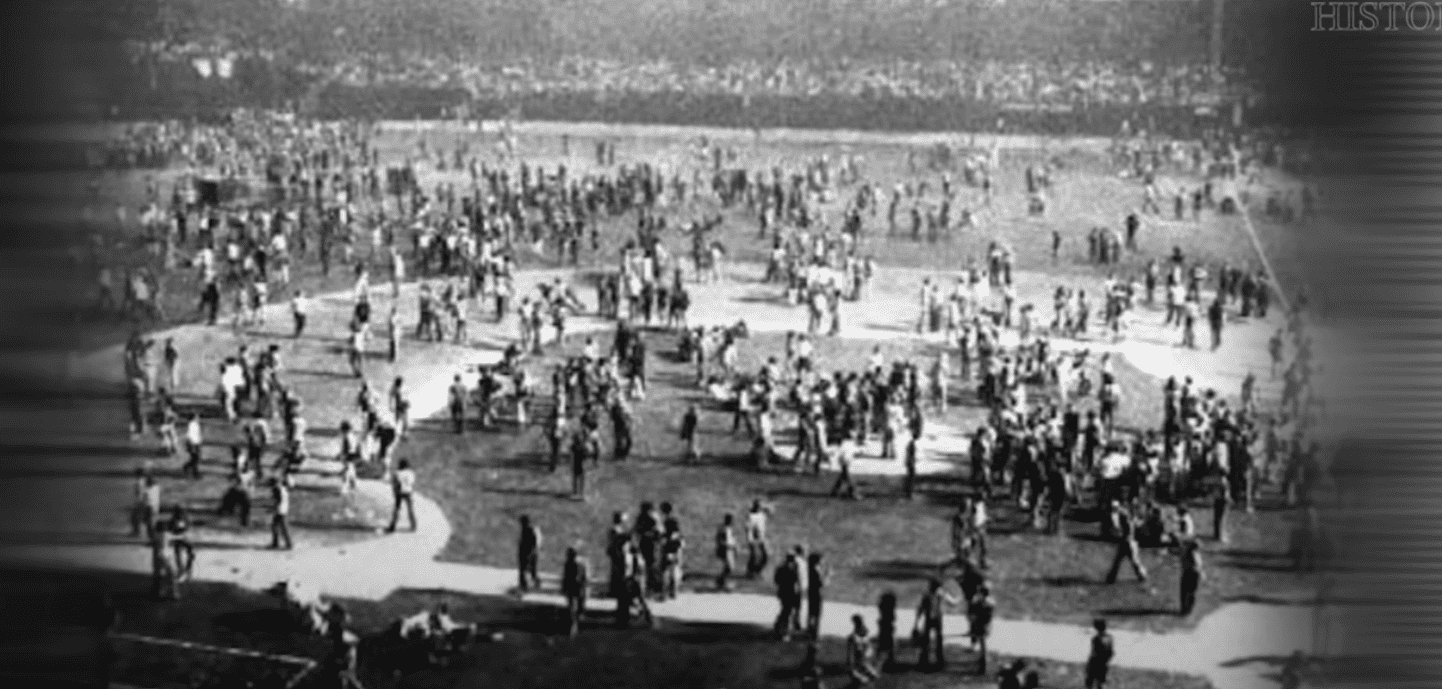Last Updated: February 27th, 2024 by Jake Cain
In an era when a cold beer and a hot dog define the quintessential baseball experience, it’s hard to imagine a time when the former could cause an all-out riot. But the annals of baseball history are not only filled with double plays and home runs; they also record moments when the game spiraled out of control. One such incident, the infamous “Ten Cent Beer Night,” is a tale of caution recounted with both horror and fascination by the channel Weird History, and detailed by Grace Johnson and Samuel Trunley in an article for the Encyclopedia of Cleveland History.
The promotion by the Cleveland Indians (now Guardians) was deceptively simple: entice fans to a baseball game by offering Stroh’s beer cans for just 10 cents, significantly below the standard price of 65 cents. On June 4, 1974, this ploy worked a little too well. The Indians were in a slump, and a Tuesday night game would usually draw a crowd of 12,000 to 13,000 fans. That night, the lure of cheap beer attracted over 25,000 spectators, who consumed an estimated 60,000 cups of beer.
The stage was set for chaos even before the first pitch. Earlier that season, the Indians and the Texas Rangers had been involved in a heated brawl, leaving tensions high. Add to that the social conditions in Cleveland—economic downturn, factory closures, environmental crises—and you had the perfect storm for trouble.
As the game unfolded, it didn’t take long for the effects of the beer to kick in. By the second inning, a woman ran onto the field to flash the crowd and plant a kiss on the unsuspecting umpire. Not long after, a naked man streaked across the field, sliding into second base as if it were the most natural thing to do.
The people serving the beer—the beer trucks manned hastily by teenage girls in skimpy tops—were simply overwhelmed by the demand. In an era before limits on alcohol purchases at sports venues, fans kept returning for their 10-cent refills. The situation deteriorated rapidly: impetuous flashings gave way to moonings, and the throwing of hot dogs and firecrackers signaled a shift from rowdy to dangerous.
The apex of the evening came during the ninth inning with the score tied at 5-5. When a fan attempted to snatch a hat from a Ranger outfielder, the situation exploded into pandemonium. Fearing an attack on his player, Rangers manager Billy Martin charged onto the field, armed with a bat, closely followed by his players. In what can only be described as a surreal moment, the Indians’ players joined the fray, wielding bats to defend themselves against their own inebriated fans.
The result was a full-scale brawl between players and the crowd, turning the outfield into a battlefield that left several people injured. Umpire Nestor Chylak was hit in the head with a chair, and players ducked projectiles ranging from beer bottles to cherry bombs.
The chaos was eventually quelled, but not before the game was forfeited to the Rangers, marking one of the most shameful moments in MLB history. The event had long-standing repercussions, leading to stricter alcohol sale regulations at Cleveland Stadium and around the league. Today, the Guardians allow a maximum of two $2 beers per person, served in open containers to prevent them from becoming projectiles.
The “Ten Cent Beer Night” stands as a stark reminder of the volatile mix of alcohol and emotions in sports. It’s a story that resonates not just for its absurdity, but for its lasting influence on stadium policies designed to keep the focus on the game, not the concessions. As bizarre as that night was, it’s a testament to the transformative power of sports—how a simple game can reflect and magnify the very best and the very worst of the society that hosts it.

